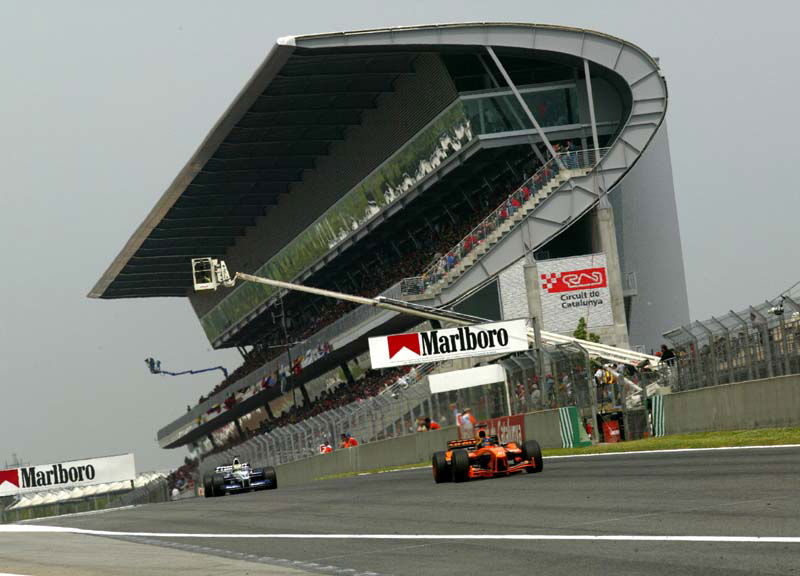Q&A: Pascal Vasselon (Michelin).
Having succumbed to Bridgestone-shod drivers in each of the past two grands prix, Michelin's F1 project manager, Pascal Vasselon knows that the introduction of Ferrari's new F2003-GA chassis in Barcelona this weekend will make it even more tricky to return to the winning ways of rounds one and two.
Having succumbed to Bridgestone-shod drivers in each of the past two grands prix, Michelin's F1 project manager, Pascal Vasselon knows that the introduction of Ferrari's new F2003-GA chassis in Barcelona this weekend will make it even more tricky to return to the winning ways of rounds one and two.
However, the Frenchman is confident that the amount of time spent pounding around the Circuit de Catalunya over the winter and between races this season had provided ample data for the five Michelin teams to select the right rubber for the Spanish venue's abrasive surface - and to continue taking the fight to the Scuderia.
Q:
What tyres will you be taking to Barcelona?
Pascal Vasselon:
We carried out an enormous amount of research and development work in Barcelona last winter and, following the most recent series of tests, our five partner teams have chosen four dry-weather tyre options for this weekend's Spanish Grand Prix. They feature the same method of construction, but the compounds are different and have not previously been used during a race weekend.
Q:
Why are some F1 tracks so abrasive?
PV:
You have to bear in mind a tyre's contact ratio - the percentage of its theoretical contact patch that is physically in touch with the track surface at any one time. The more pores there are in the circuit, the greater the strain will be on parts of the tyre actually making contact. In Barcelona, the contact ratio is relatively small - the load on tyres is not spread evenly and that increases wear rates.
Q:
Could any tyre be made equally effective for Melbourne, Monaco or Barcelona?
PV:
Tailoring tyres to specific tracks is one of the trickiest areas of the design process. Because of Barcelona's abrasive nature, Michelin naturally chooses compounds from the harder sector of its range. But would it be possible to test soft tyres in Barcelona?
It would, but you wouldn't achieve a great deal. For instance, we tried our soft Melbourne tyre in Barcelona and it began to grain substantially before the end of one lap. If
you wanted to make a comparison between such tyres in Spain, you could only do so in the first sector of the track. And if you brought a Monaco tyre to Barcelona, it would probably have peaked by the time you'd reached the end of the very long turn three. Although softer compounds generate more grip, in Barcelona they would still be slower from lap one than a tyre that is specially designed for the track. They would suffer an extreme rate of wear for several laps, improve slightly for a short while and then deteriorate again until they were completely spent.
Q:
How many pit-stops do you predict will be the norm this weekend?
PV:
Pit-stops in Barcelona take about 30 to 33 seconds, which is about average for the season as a whole. As was the case in Imola, some teams might opt to run a two-stop strategy - but three will be an equally valid race option.
